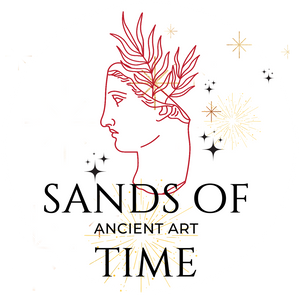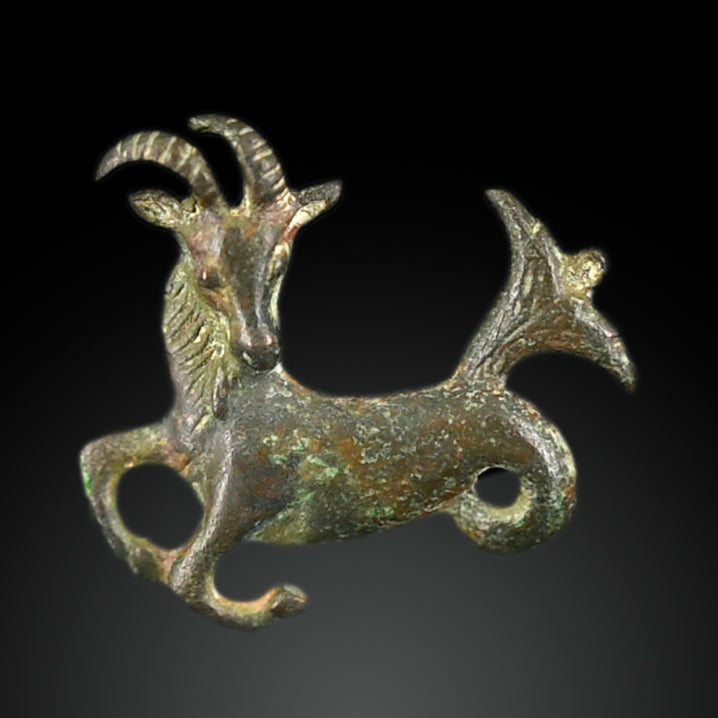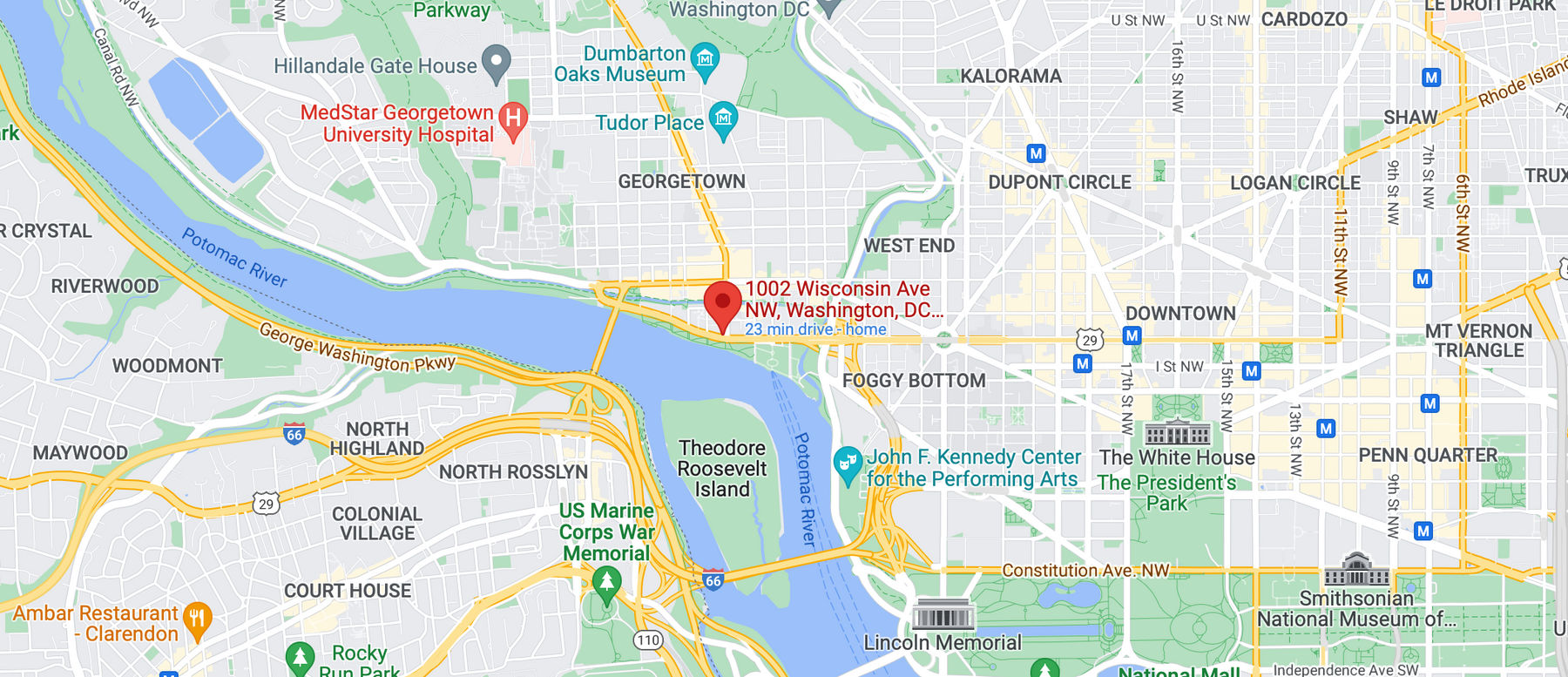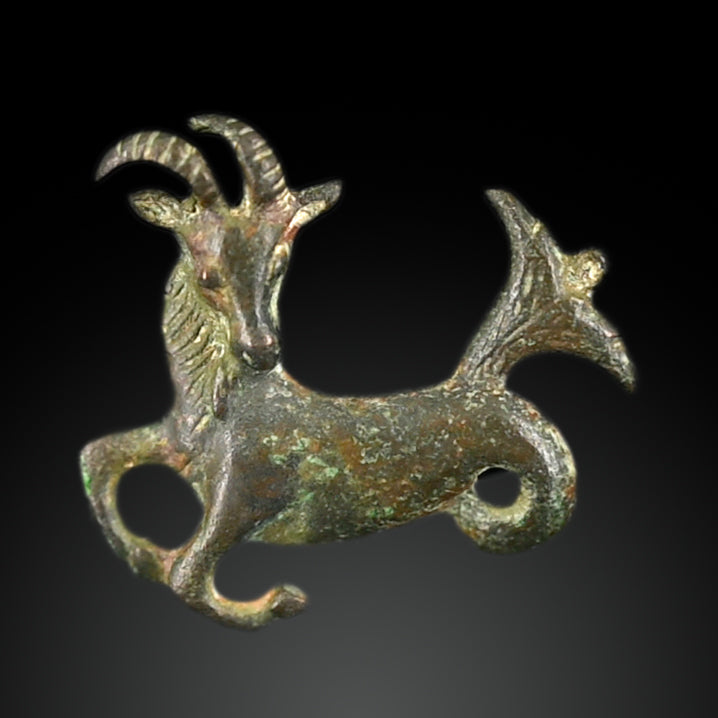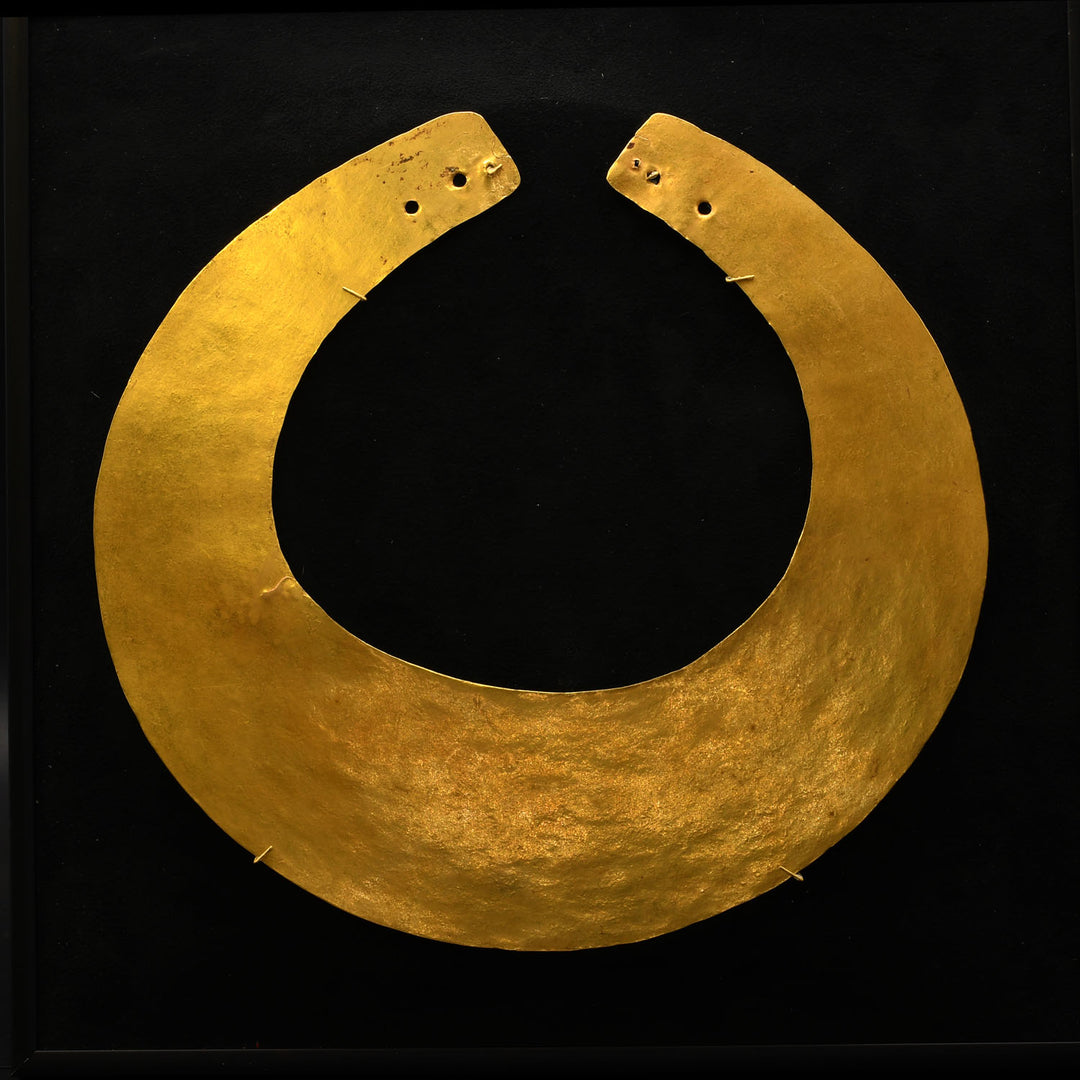An Egyptian Floral Bead Necklace, New Kingdom, Amarna Period, ca. 1352 - 1336 BCE
EJ2440
- 此物品可享受美国境内免费运送,国际运送则需支付 60 美元的统一费用。
This pretty necklace of bright blue glazed faience ring beads, and gold fused cylinder beads is re-strung with representations of fruit, flowers and parts of plants that were a durable version of the elaborate perishable floral collars worn by banquet guests during the Eighteenth Dynasty. Made almost exclusively of flat-backed multicolored glazed composition, and with a suspension loop at the top and sometimes at the bottom too, they were usually strung to form an openwork broad collar. With probable amuletic significance, these floral elements were the most frequently worn pieces of jewelry among the royalty and elite during this time. Individually made in molds, the beads in this example include white lotus petals, red and blue dates, yellow mandrake fruits, flower petals in bright blue, and green, a white daisy, dom-palm leaves and grape bunches. All growing plants were inherently symbolic of new life, but some flowers also open each morning, reconfirming the idea of resurrection.
For a related example see: The Field Museum of Natural History, Chicago, inv. no. 31261. For further discussion, see C. Andrews, Ancient Egyptian Jewellery, London, 1990, pp. 122-3, fig. 105 (a broad collar with similar mandrake fruit found at el-Amarna.) and a collar in the Metropolitan Museum of Art, New York, with similar date and lotus petal beads: acc. no. 40.2.5.
Akhenaten and Nefertiti are frequently shown wearing board collars featuring such bead pendants. For example, the Berlin bust of Nefertiti shows the queen wearing a broad collar with mandrake fruit: cf. D. Wildung (et. al.), Egyptian Museum and Papyrus Collection, Berlin, Berlin, 2010, p. 106-7, fig. 56. The small painted relief also in Berlin shows the king and queen wearing elaborate floral polychrome collars of such beads: op.cit., pp. 102-3, figs. 52-3.
Medium: Faience
Dimensions: Length: 18.5 inches (47 cm)
Condition: Some wear to the cylindrical beads, and some ring beads are reattached to the main floral elements. Professionally restrung with a modern 18K gold clasp. Presents well and in very good condition overall.
Provenance: Private collection of a NJ Optometrist. Ex. Sotheby Parke Bernet, 3/20/1968, lot #52 (part) and Tel-el-Amarna excavation, Philip Mitry collection (part) prior to 1970. Mitry ran the Anglo-American Bookshop (est. 1869) in Cairo, Egypt from the early 1920s and also dealt antiquities from the shop with an official license (#90) until he left for California in the 1960s, thereafter a private Hollis, Queens, NY collection, then by descent.
Sands of Time提供终生无条件的真实性和出处保证。您从我们这里购买的每件物品都附有一份真实性证书,注明文化、出处和年代。
此外,我们会进行尽职调查,以确保据我们所知,该物品不是从发掘地、建筑纪念碑、公共机构或私人财产中非法获得的。只要有可能,我们就会参考现有的收藏或出版物。只要有可能,我们就会参考现有的收藏或出版物。
我们周二至周五通过 FedEx 发货,如果您的订单在下午 2 点之前收到,通常当天发货。在美国大陆,包装、运输和保险都是免费的。根据尺寸和目的地,交货时间为 1 至 5 个工作日。
对于海外发货,我们收取小额固定费用,包括包装、准备所有海关文件、保险和承运人费用,符合所有美国和国际海关要求。海外发货使用 USPS 优先邮件或 FedEx 发送,但如果您有运输偏好,请联系我们。国际客户负责所有关税和税款。
